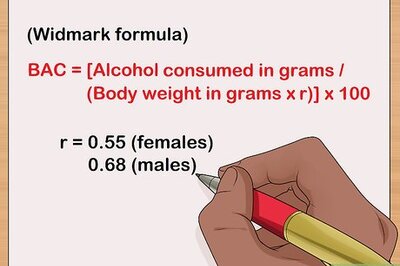
views
Going into the 2024 Lok Sabha elections, the ideological left had convinced itself that the BJP’s goose was cooked. That the party, so blinded by its own success, has turned a Nelson’s eye to the sullen and silent voter who will punish the saffron front for “prevaricating” on an OBC-SC-ST caste census, for not creating enough “productive jobs” and for “favouring the rich”.
And when the seven-phase polls began on April 19, the ideological opposition to the NDA began hunting for any indication, however tenuous, to confirm its biases.
Little wonder then that it has made a very big deal about the underwhelming voter turnout in phase 1 and 2 of the election. One group of the Narendra Modi-led NDA’s critics has even branded the palpable disinterest of voters as a “rebellious rejection” of the incumbent.
Before we analyse whether the conclusion is right or wrong let’s first establish the turnout figures.
In a total of 190 seats spread across phase 1 and phase 2 of the Lok Sabha elections, the turnout stood at 67.2% and 66.7%, respectively. Taken together, the turnout was a little over 3 percentage points (pp) lower than in 2019. Clearly, appeals to voters by Prime Minister Modi ahead of phase 2 failed to energise them.
Does this failure of the BJP to galvanise the voters suggest deep-seated elector disenchantment?
Let’s study the historical record to examine whether a correlation can be made between low voter turnout and anti-incumbency.
First, there have been at least four Lok Sabha elections where turnout slid and had negative voter participation been a sign of anti-incumbency then Jawaharlal Nehru’s government would’ve lost in 1957, Indira Gandhi’s in 1971, Atal Bihari Vajpayee’s in 1999 and BJP state governments in Gujarat assembly polls in 2017 and 2022.
To be exact, in 1957, Nehru won a second term despite a 0.57% drop in voter turnout. In 1971, Indira won despite a 5.7% drop in voter turnout. Interestingly, in 1999, the voter turnout dipped by almost 2% even though the election was conducted just after the Kargil war.
In 2017, the Gujarat assembly polls saw a 3% drop in voter turnout but the BJP was back and won again in 2022 though the turnout registered a steep 5.4% drop.
In these cases, the reason for the drop in turnout in all probability was voter fatigue and not necessarily a sign of voter anger directed against the incumbent.
Conversely, of the 17 Lok Sabha elections that have been conducted since 1952, the turnout increased 10 times. The turnout jump didn’t hand any one side the advantage. The incumbent lost four times and won in six elections.
But it is also true that NDA’s victories coincided with higher voter turnout in all Lok Sabha elections except in 1999. Is it therefore reasonable to assume that a higher polling percentage is crucial for the BJP?
This brings us to examine a second set of data points.
In their work, psephologists Dorab Sopariwala and Dr Prannoy Roy conclude that despite the high overall voter turnout the BJP’s winning percentage was much better on lower voter turnout seats.
The duo disaggregated the overall voter turnout and looked at urban-rural constituencies and then exclusively at rural constituencies where the turnout was above 60%. This mix was taken to discount the BJP’s greater support base and natural predilection to win in urban constituencies.
Sopariwala and Roy’s study concluded that the BJP-led NDA performed better in low-turnout constituencies in the 2004, 2009, and 2014 Lok Sabha polls. So much so that the duo noticed that “the BJP+’s margins of victory dropped, and in some cases ‘lost’ to the Congress+ in high-turnout seats…”
This interesting statistical exercise reveals that the BJP is more successful in constituencies where the turnout is lower perhaps because being a cadre-based party it has the organisational wherewithal to get its core base to the polling booth.
Third, if a lower vote percentage automatically spelt defeat for the incumbent, then all of the INDIA bloc’s star candidates in phase 1 and phase 2 are in danger of losing.
And we’re talking about Rahul Gandhi, Shashi Tharoor, Nakul Nath, Gaurav Gogoi, KC Venugopal, and Dayanidhi Maran. In all their constituencies the voting percentage has fallen between 1.5% to a maximum of nearly 8%. While some of these stars might bite the dust on June 4, enough of them will also win to disprove the theory that low voter turnout is associated almost always with a vote for change.
The three points highlighted above clearly reveal that it is tendentious to draw a causality between turnout statistics and electoral results.
















Comments
0 comment